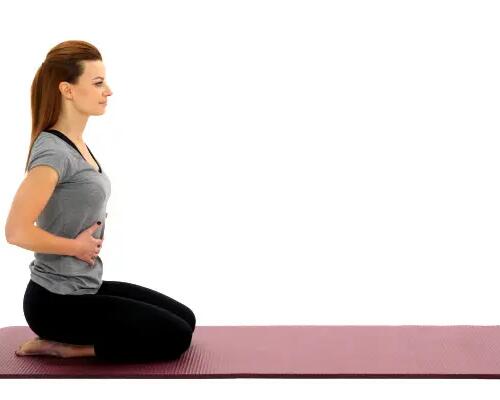What is the stomach vacuum?
As its name suggests, the stomach vacuum is an exercise that strengthens the abdominal wall. Unlike "classic" exercises such as the chest raise, which are designed to work the rectus abdominis (the famous six pack), the vacuum tends to work the transverse muscles. The transverse muscles are the deepest layer of ab muscles. They're what give you a flat stomach. Finding out how to use them is very worthwhile The stomach vacuum is just one of several hypopressive exercises, which place no pressure on the perineum, that can be performed simply through breathing.
It is a gentle but effective method, though you do need to know how to do it correctly.



